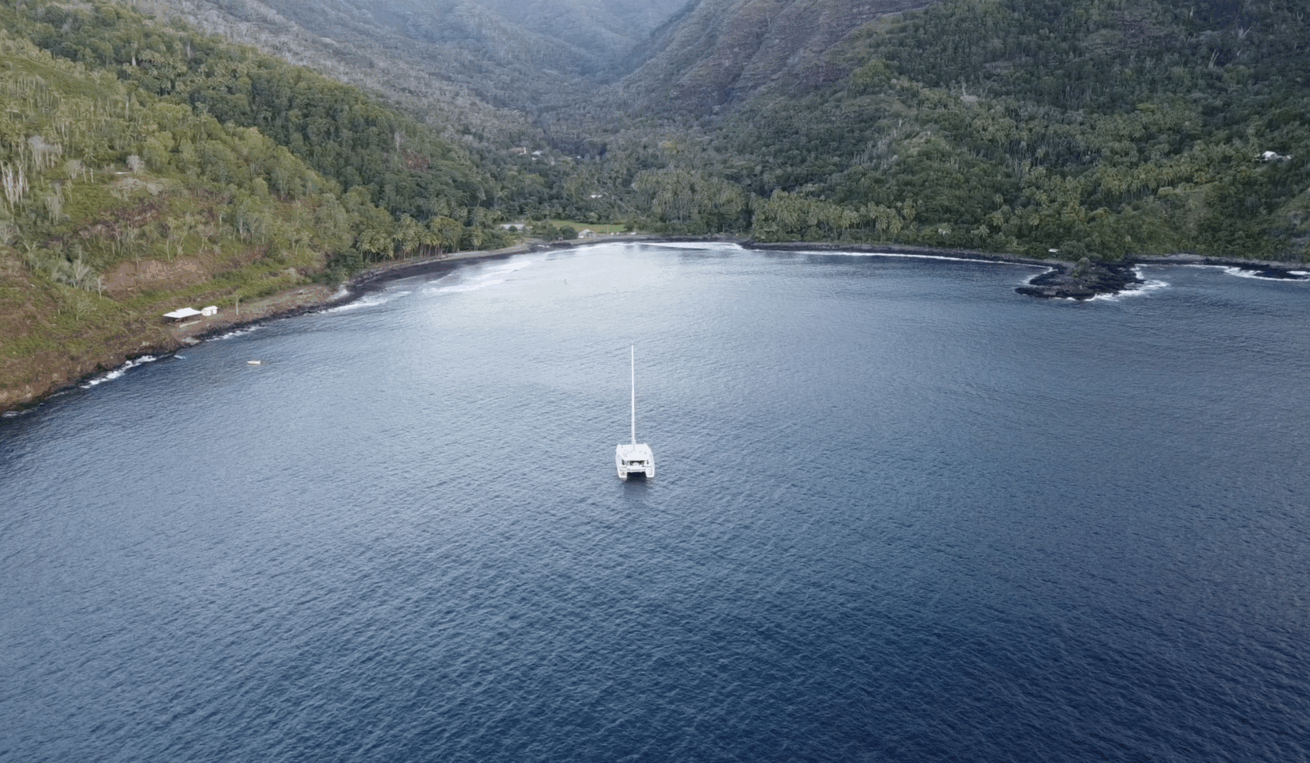The Magical Marquesas!
“More people visit Antarctica each year than the Marquesas ”
Located 1,500 kilometers northeast of Tahiti, the Marquesas archipelago is made up of 12 islands, only six of which are inhabited. Rising dramatically from the Pacific Ocean, these lush and rugged islands are raw, untamed, and strikingly beautiful. This is a land steeped in legend and myth—mesmerizing, unforgettable, and alive with ancestral spirit.
To the outside world, they are known as the Marquesas. To the local people, they are Te Henua Enana (in Northern Marquesan) or Te Fenua Enata (in Southern Marquesan)—“The Land of Men.” With a cultural heritage stretching back millennia, the islands were once believed to be the home of the Polynesian gods, later becoming a cradle of masterful seafarers and navigators. But with the arrival of European traders and explorers in the 16th century came disease and conflict, decimating the population and nearly erasing an entire civilization.
Despite this, the Marquesas endured. Their haunting landscapes and rich cultural depth have inspired artists, writers, and musicians. The islands remain a place of profound allure—lush, primal, and otherworldly.
Today, the Marquesan people are reclaiming their heritage in a powerful cultural revival. On July 26, 2024, the archipelago was officially inscribed as a UNESCO World Heritage Site, recognized for its extraordinary cultural and natural significance.
For those aboard Bundalong, the journey through the Land of Men has been nothing short of extraordinary.
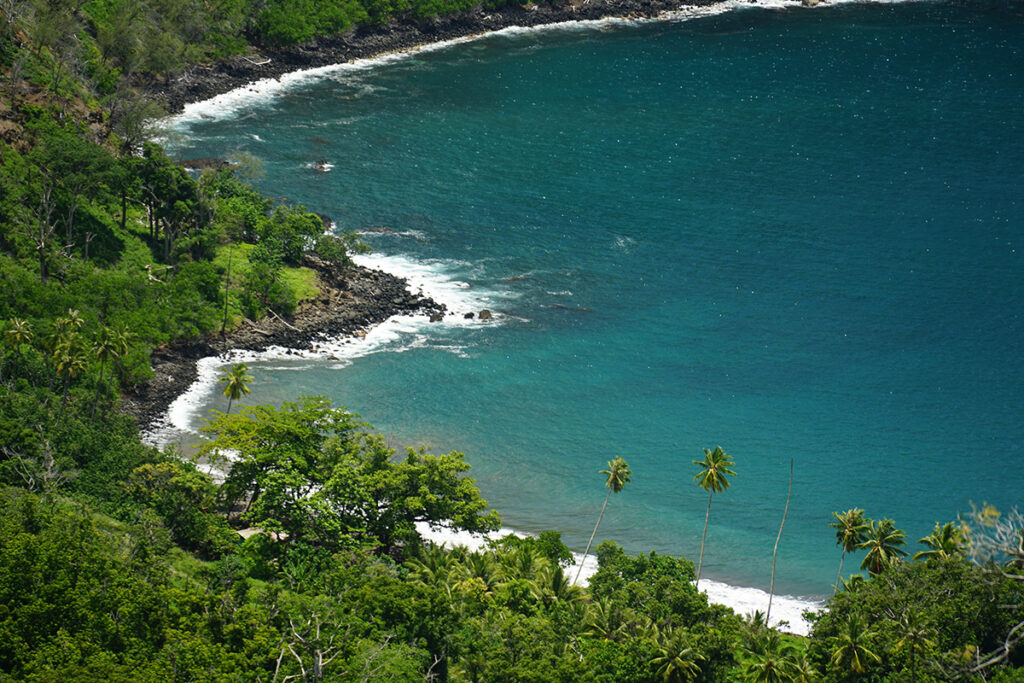
DAY 1:
Welcome to Hiva Oa!
According to the legend, Hiva Oa is the main beam of God Oatea’s “big house.” Today, it is known as the ‘garden of the Marquesas Islands’ because of its very fertile soil and lush vegetation. Around 2,200 people reside on the island and volcano, Temetiu, is Hiva Oa’s highest point at 3,937 feet. The intense green countryside hides roads and houses from view. The craggy mountains and deep valleys are home to a multitude of archeological sites and vestiges of an ancient civilization.
Our guests joined Bundalong, anchored in the bay of Hanaiapa on the northern side of the island. This isolated bay, surrounded by jungle-clad cliffs was the perfect welcome to our tired travelers. We also welcomed onboard our guide, Tonio, a Marquesan native and a wonderful leader for our journey ahead.
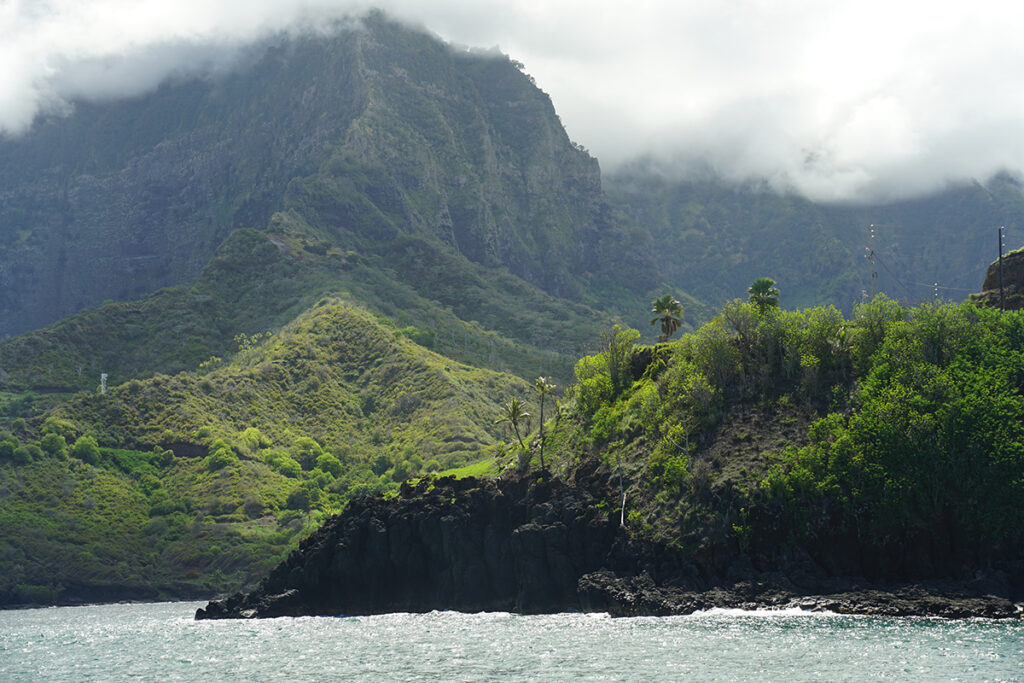
DAY 2:
We started the day early, enjoying the amazing array of fresh fruit on hand (it seems to grow on on every tree here!). Afterwards it was time to start our explorations with a 4X4 tour of Hiva Oa.
We visited the island capital, Atuona where there is a small cultural centre dedicated to French artist Paul Gaugin, who lived and worked on the islands. Overlooking the bay is the beautiful Cavalary Cemetery that is his final resting place, alongside Belgium musician and actor Jacques Brel. We then headed along the eastern coast, along the valley of Taaoa, to the Upeke archeological site, an extremely sacred place, once an especially important ceremonial site.
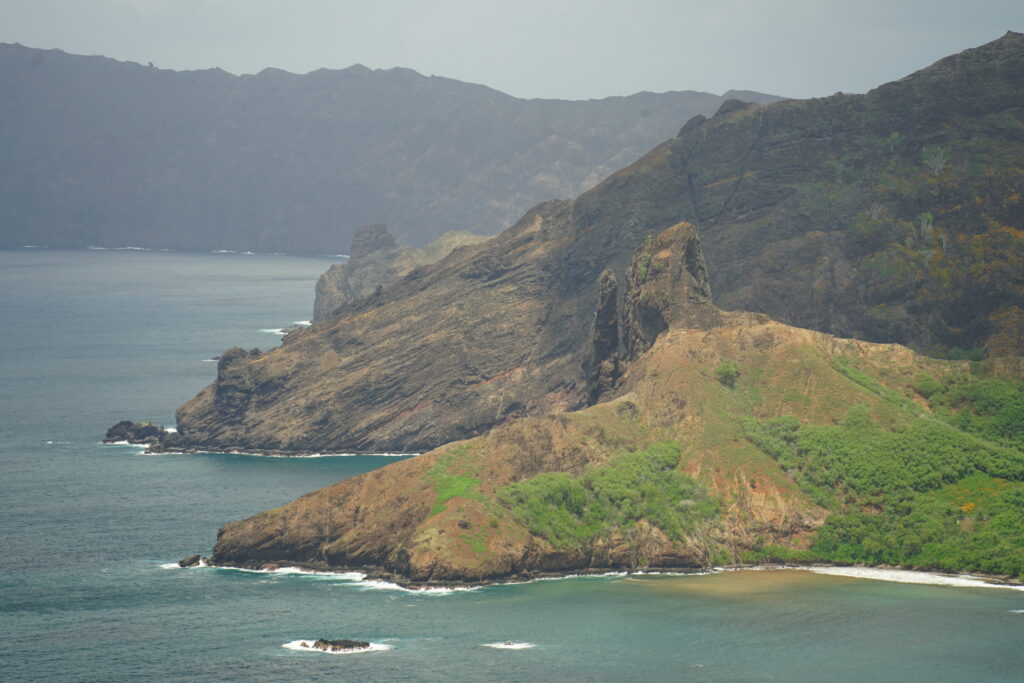
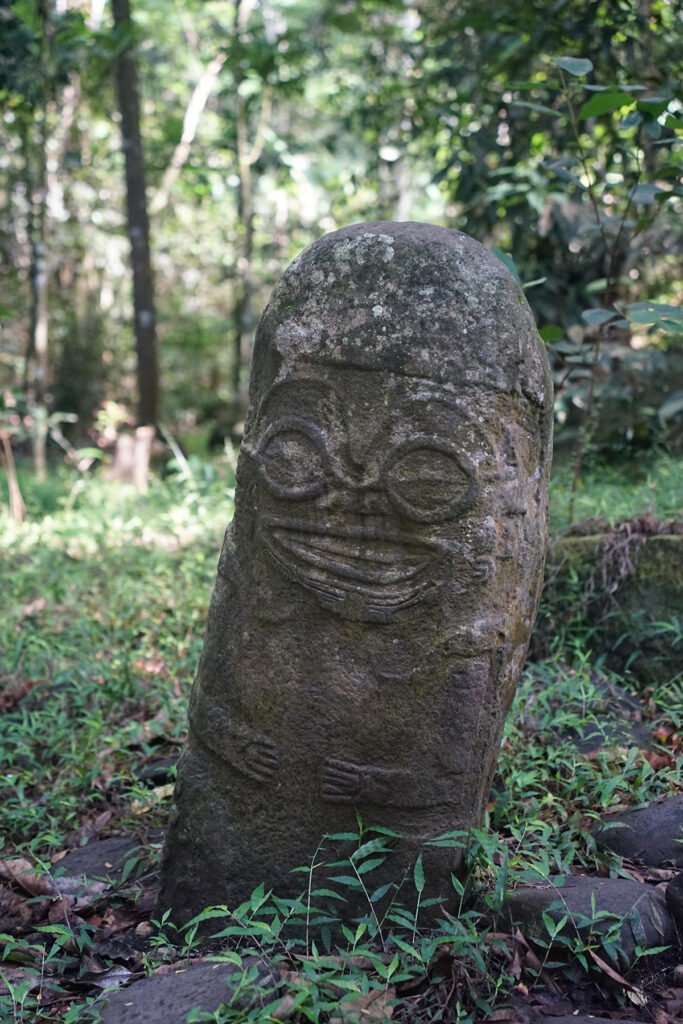
DAY 3:
Another early start, this time we got the legs moving and headed up over the cliffs we were anchored under, following tiny jungle tracks (led, thankfully by Hiva Oa local, Bryan) down to Hanatekuua beach, located just around the headland from Hanaiapa. This ‘short and easy’ route was a little harder than we imagined and we were glad of the freshly cut coconuts at our destination and the outrigger canoe that brought us back to Bundalong.
In the afternoon we set sail south to the island of Tahuata to the village of Vaitahu.
Tahuata is a high volcanic island, its name means “sunrise” in Marquesan. It is crossed by a mountain range that culminates at 3,445 ft, on Mount Tumu Mea Ufa, and at 3,200 ft on Mount Pahio. Local inhabitants earn their living by selling sculptures and also produce mono’i, the famous Tahitian oil extracted from dried coconuts and perfumed with flowers such as the tiare Tahiti or frangipani.
And what an anchorage this was! Just stunning!
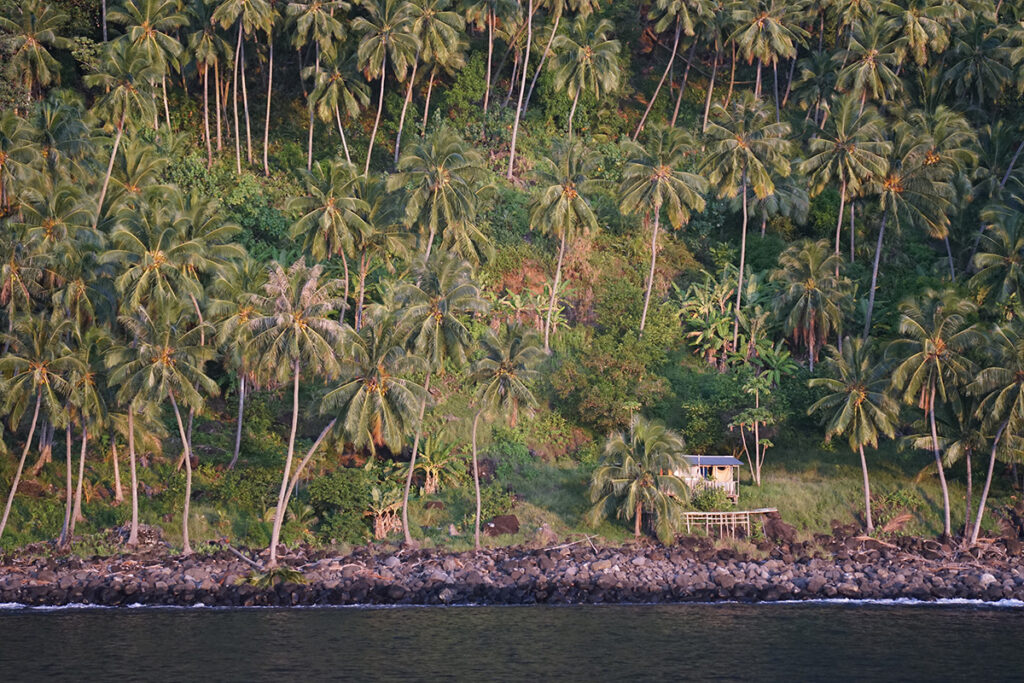
DAY 4:
Whilst the Marquesas are not known as a big diving destination, there are pelagics in abundance– notably manta rays and sharks, so this morning we took the opportunity to dive in the clearest waters of the islands and were well rewarded by coming face to face with a dozen feeding Mantas – just magical!
In the afternoon, we visited the beautiful village of Vaitahu, a place steeped in history. Spanish explorer Álvaro de Mendaña landed here in 1595, naming it Madre de Dios. Later, Captain James Cook visited in 1774, calling it Resolution Bay, and in 1842, Admiral du Petit-Thouars signed the treaty annexing the Marquesas to France right here.
Vaitahu also marked the beginning of Christianity in the Marquesas, with Protestant missionaries arriving in 1797 aboard the ship Duff, followed by Catholics who built the striking church that still stands as the village’s most prominent landmark.
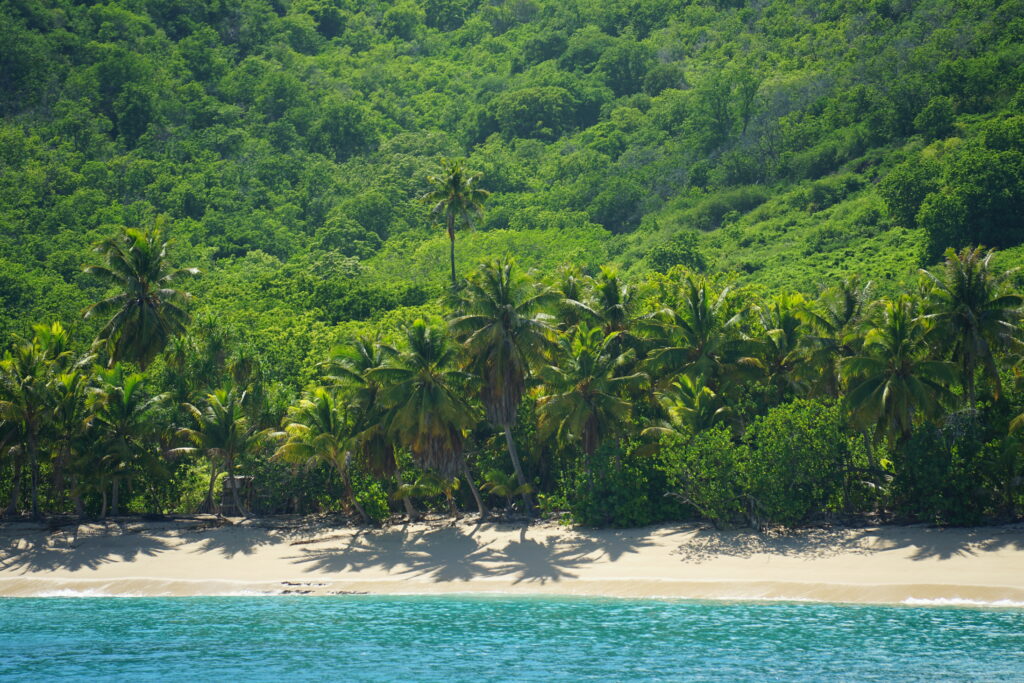
DAY 5:
We headed the short distance south to anchor off the village of Hapatoni—and what a place it is! Sometimes, it’s difficult to capture the essence of an experience like the one we had today. We were greeted with a traditional welcome as the entire village gathered at the dock to meet us. They draped us in flower leis and headpieces, and with the intoxicating fragrance of tiare flowers filling the air, we were escorted through Hapatoni. Surrounded by majestic mountains and towering palm trees, the village felt both tamed and wild, as if nature and humanity were perfectly intertwined. Accompanied by their traditional music and song, they led us to the church of the Immaculate Heart of Mary. There, the villagers sang the Lord’s Prayer in a beautiful, flowing Marquesan rhythm. The moment was breathtaking, evocative, emotional and undeniably beautiful.
We were then escorted to their main meeting point along the ‘royal road’ where they performed local dances and hakas– and much to our joy, and horror, in turn we were asked to join in. It caused a great amount of amusement on both sides!
We then enjoyed the local artisan market – famed throughout the Marquesas and a significant cultural and artistic hub in the archipelago. The village artisans are known for their exception skill and creativity in particular their swordfish rostrum carvings, which feature traditional motifs and are highly valued both as art and for their cultural significance
Finishing the experience we enjoyed a sumptuous lunch, sampling the best of the local produce from breadfruits to roasted wild pig and freshly caught pa’oa.
What a day!
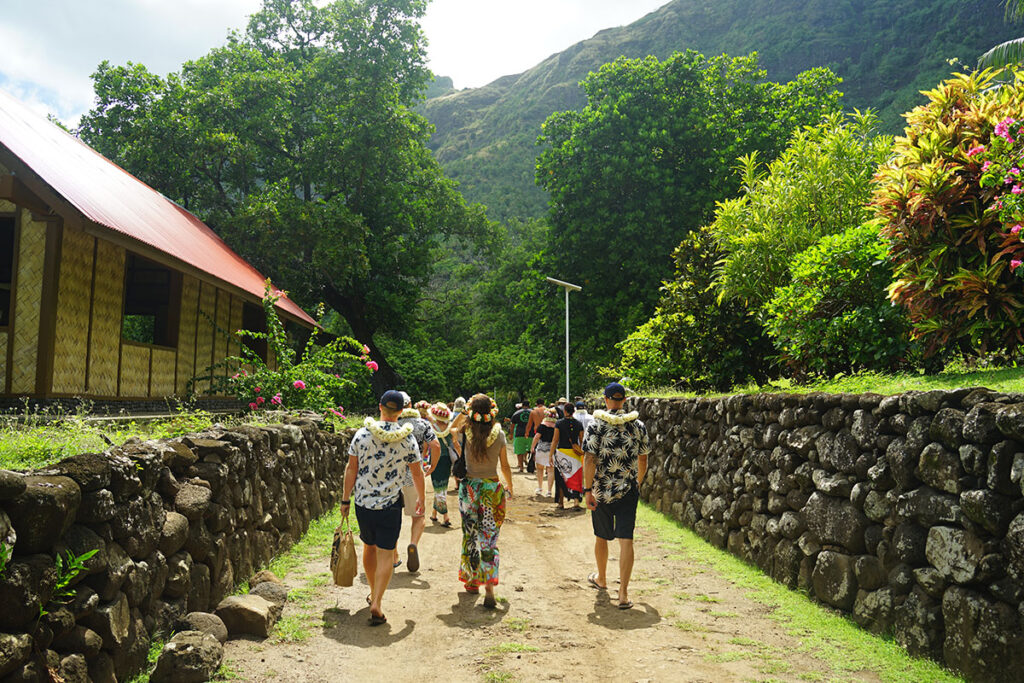
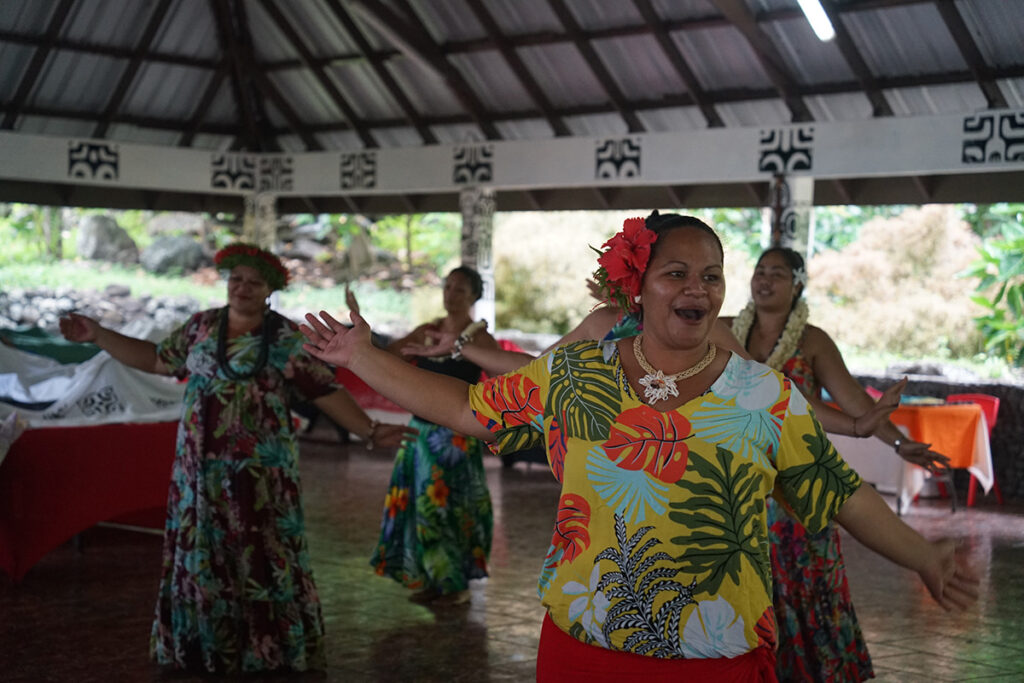
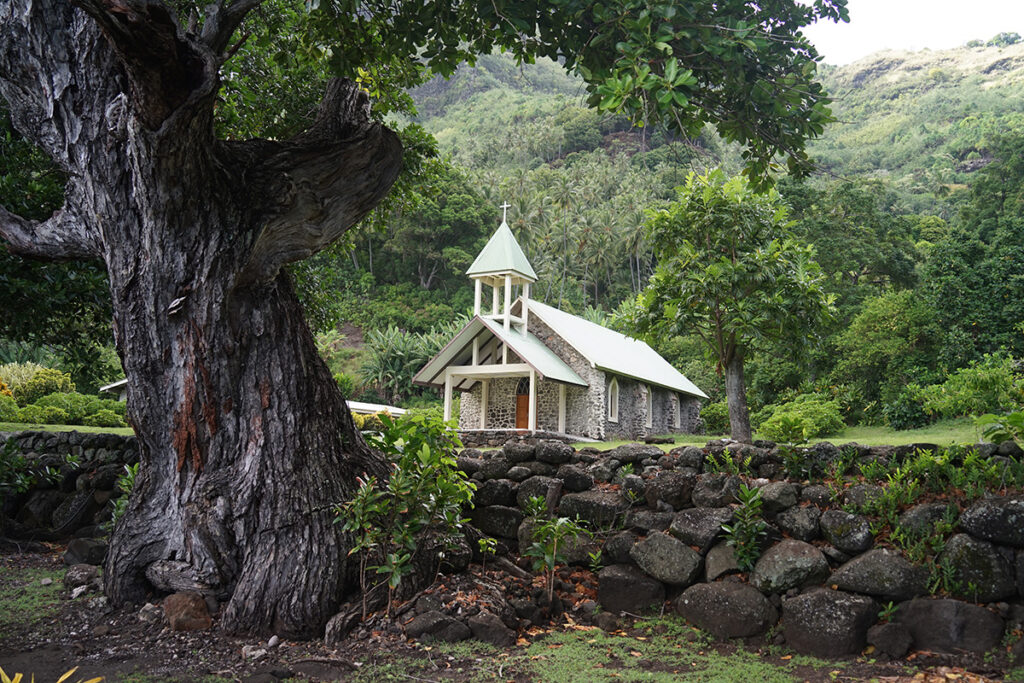
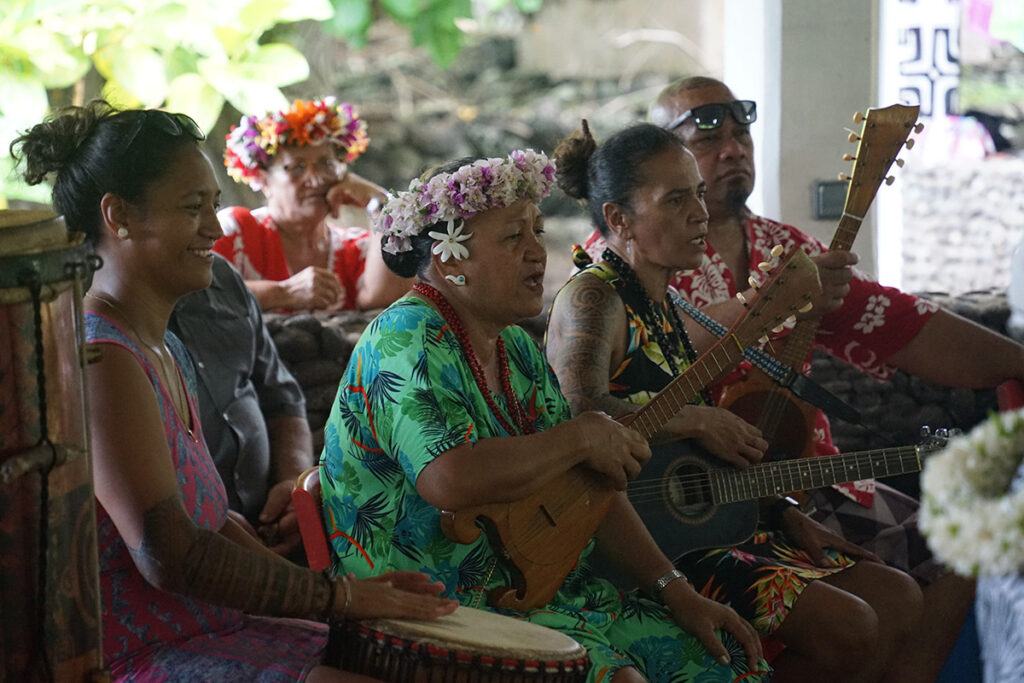
DAY 6:
We set sail in the morning for our longest crossing of the trip, heading the 75nm northwards to the little island of Ua Pou.
Ua Pou, meaning “pillar” in Marquesan, takes its name from the 12 towering pitons that dominate the landscape. The highest of these, Mount Oave, rises to 4,040 feet above sea level, making it the tallest peak in the Marquesas.
There are many legends surrounding these iconic pillars. One story tells of the warrior Poumaka, who defeated Matafenua from Hiva Oa at this very site. Others believe that Ua Pou represents the entrance pillars to the home of the god Oatea. In 1888, the striking formations also inspired poet Robert Louis Stevenson, who described them as “volcanic arrows, looking like a church bell tower.”
With gentle winds guiding us, we dropped anchor in Hakahetau late in the afternoon, just in time to witness the evening light bathe the pitons in a warm, golden glow.
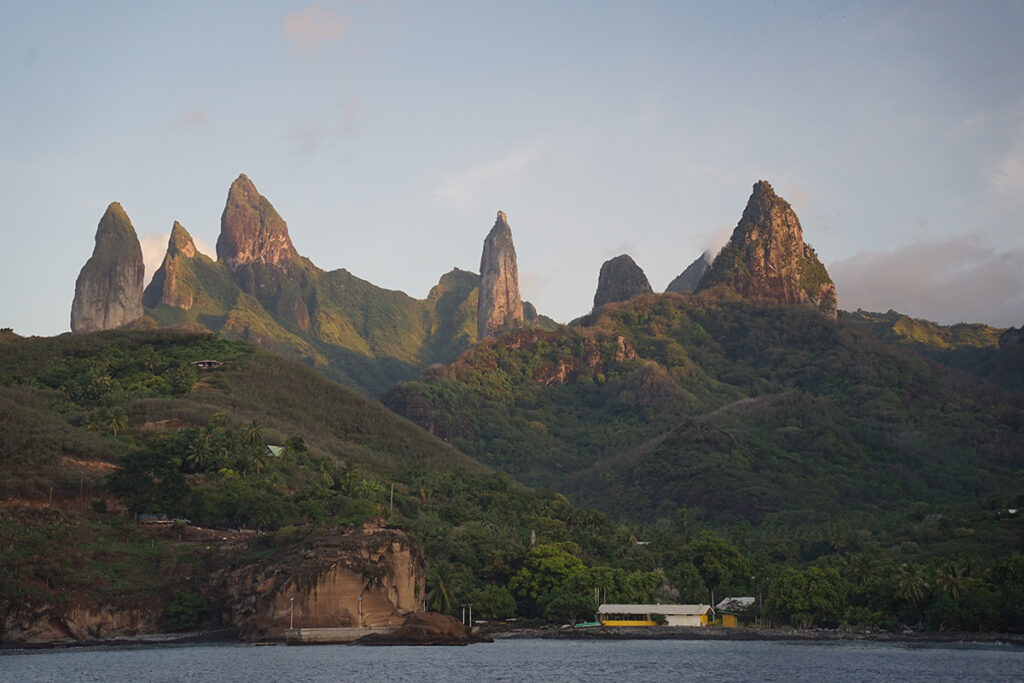
DAY 7:
After a peaceful night at anchor, we divided into three groups to explore the island—by foot, by 4×4, and by fishing boat.
The first group set off early, ashore by 6:30 a.m. Their day was dedicated to a challenging hike through the jungle to the base of Poumaka, a towering peak that rises to 3,192 feet. The trek was a tough one, but the breathtaking views along the way made it all worth it.
Next, the boys headed out for a trip over the hill to the island’s capital, Hakahau, where they joined a local fishing boat—a Poti Marara—for a day of game fishing. These small, open, and fast vessels are a staple across French Polynesia. They took us to the prime fishing spots, and while success varied, there was more than enough fresh catch for a delicious evening meal.
Our final adventure was a 4×4 journey around the island, showcasing the dramatic contrasts of this small paradise. On one side, we encountered barren, windswept cliffs; on the other, lush, green valleys fed by the towering mountains that divide the island. The contrast was striking—on the dry cliffs, we spotted manta rays feeding in the sea below, while deep in the jungle, we watched tropic birds flitting among fruit trees and dense vegetation.
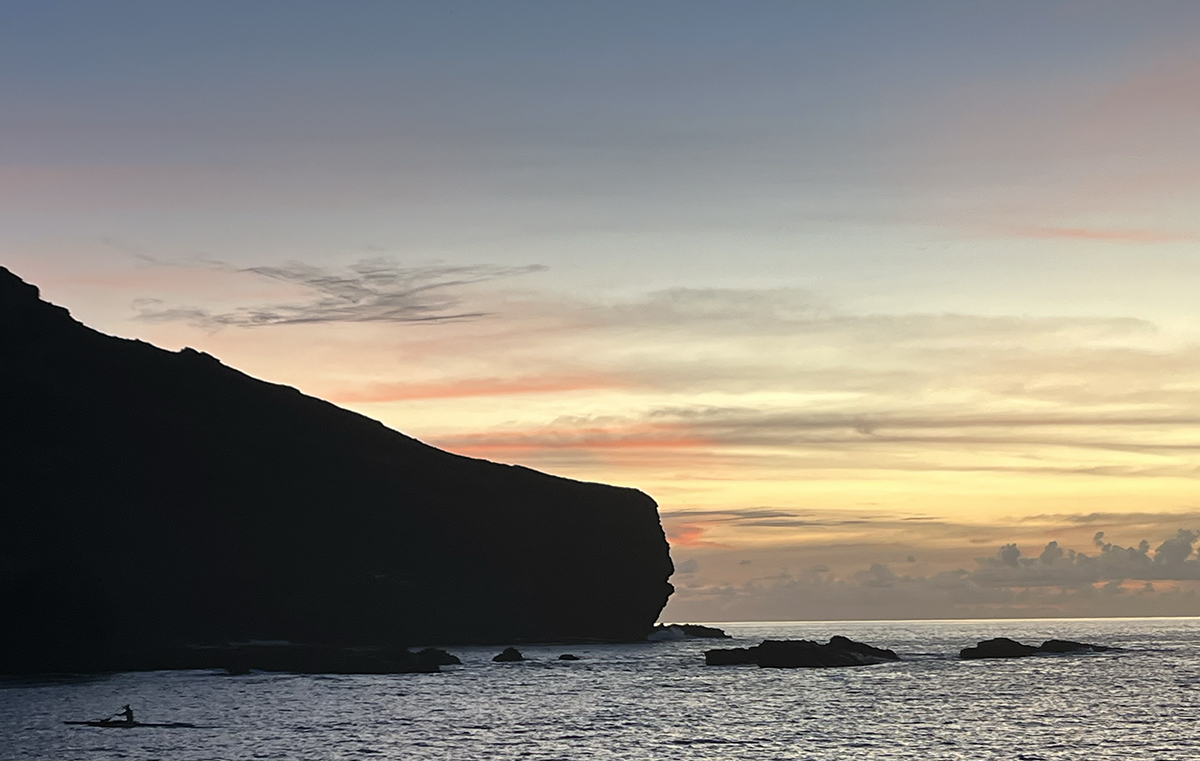
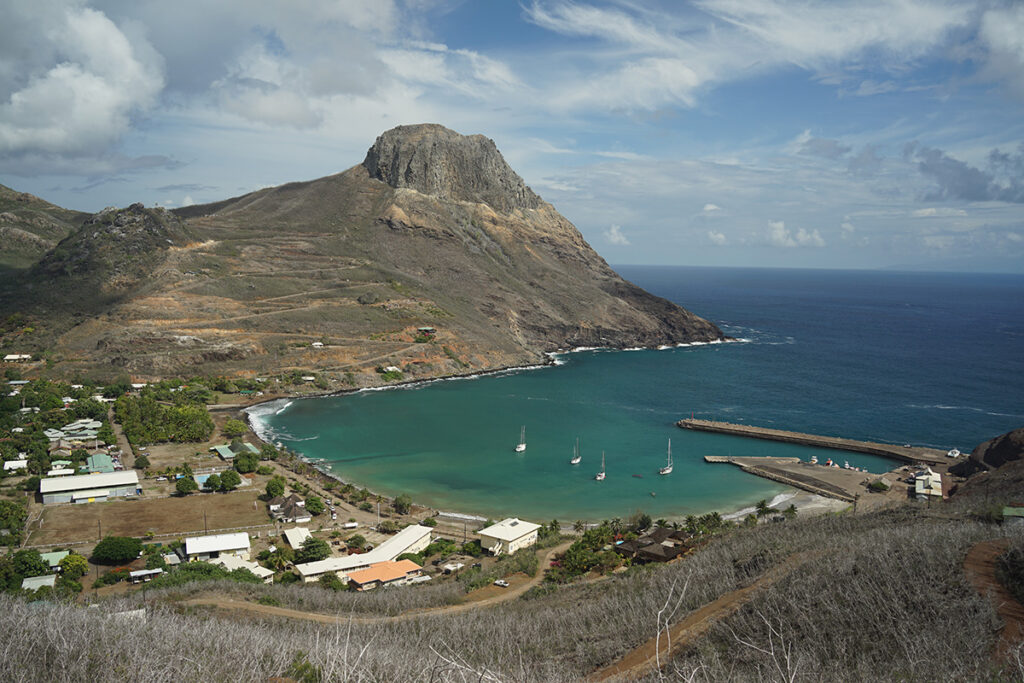
DAY 8:
A restful morning, with a quick stop over the hill in Hakahau to the local artisan market, more shopping! Then back to the boat for an afternoon sail to our final island, Nuka Hiva and to our anchorage in Hathiheu Bay.
Hatiheu is situated on the northern side of Nuku Hiva, tucked between statuesque cliffs. At the end of the bay lies the village of Hatiheu, a quiet place with well-kept homes and a peaceful atmosphere, surrounded by the island’s natural landscape. A delightful stop – especially as we sailed into the anchorage just in time for sundowners!
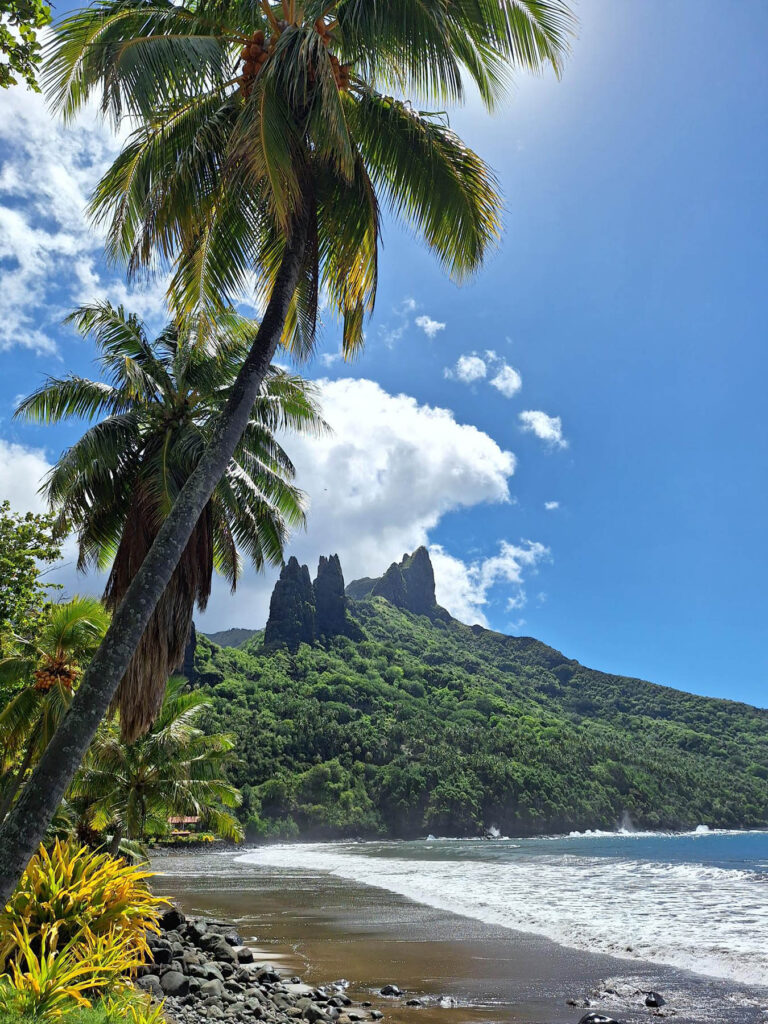

DAY 9:
One cultural experience not to be missed is riding the horses of the Marquesas. Introduced in the mid-19th century, these horses became indispensable for navigating the island’s roadless valleys, steep slopes, and high ridges, and have since become deeply rooted in local traditions. Today, we finally had the chance to experience these beautiful animals with a ride from Hatiheu to the stunning beach at Anaho.
Anaho is undoubtedly one of the best beaches we’ve anchored off during this trip. With the wonderful Restaurant Kaniho directly on the sand, it was the perfect day to relax—floating in the crystal-clear sea and indulging in another delicious seafood feast ashore.
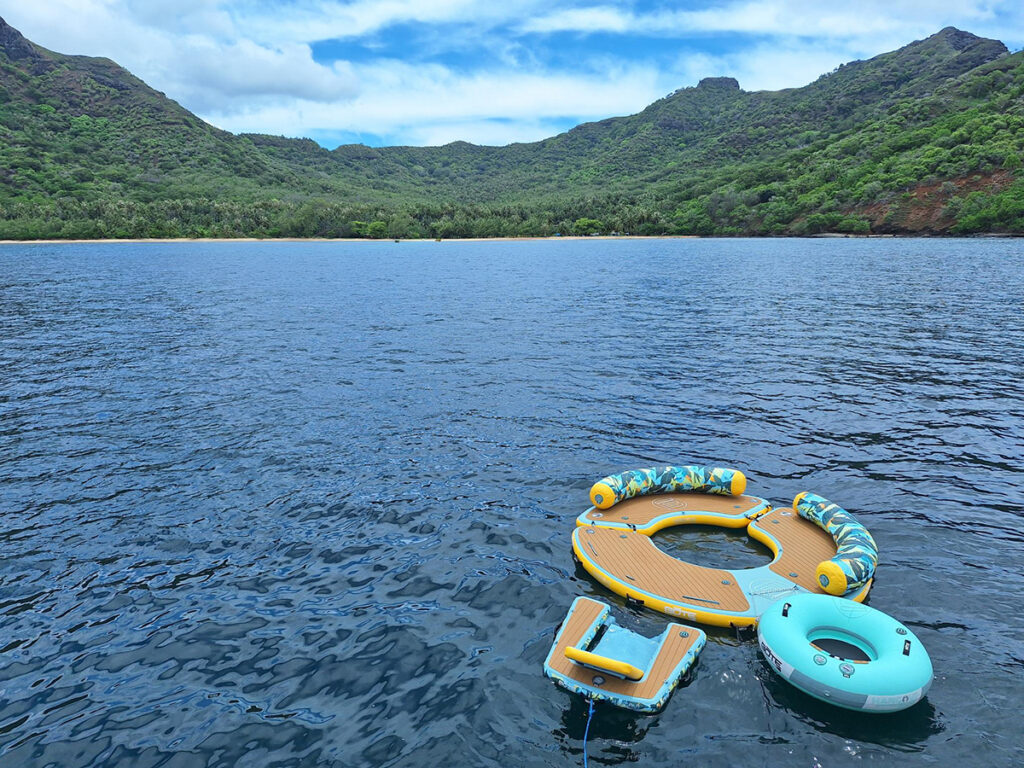
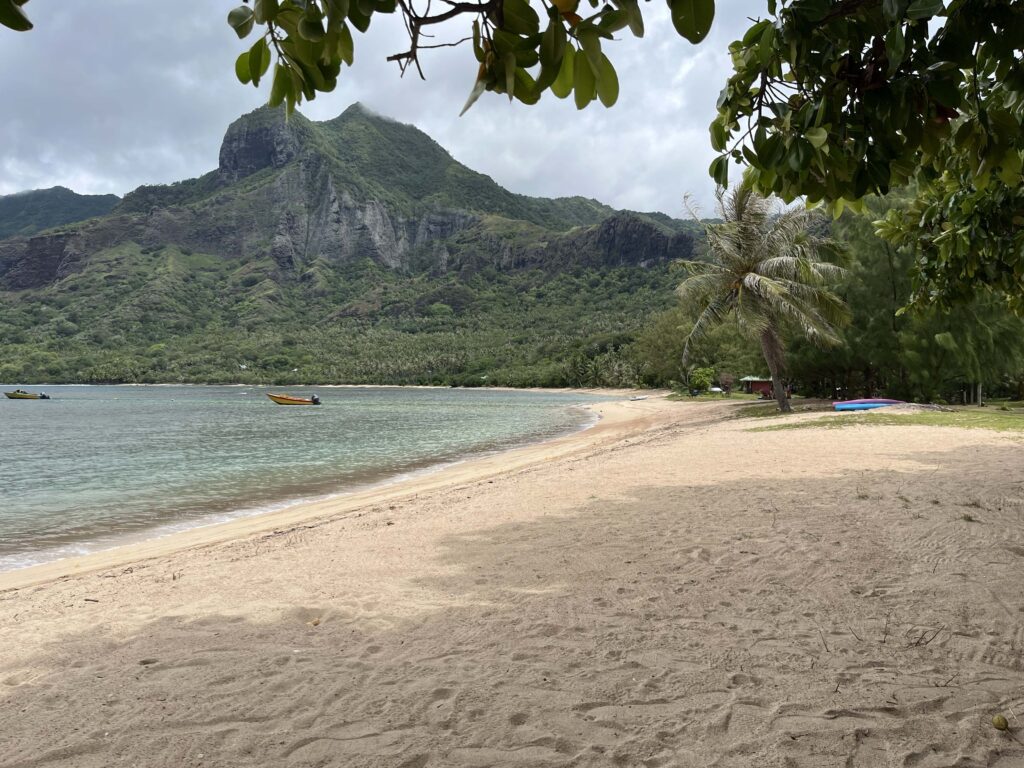
DAY 10:
It was tough to leave Anaho Beach – but we had one last stop before heading south: the cultural site of Kamuihei. As we arrived, we passed beneath the sprawling roots of a huge banyan tree, its presence immediately setting a quiet, reverent tone.
The site itself felt like walking through layers of time. Scattered among the trees were ancient paepae (stone house platforms), tiki statues worn smooth by the years, and mysterious petroglyphs carved into boulders. It’s strange and moving to stand in a place that once pulsed with life, ceremony, and meaning.
We learned that before European contact, the Marquesas supported a population of around 100,000. By 1927, after waves of disease and colonization, that number had fallen to just over 2,000. Standing there, it was impossible not to think about that loss. And yet, there was something hopeful too – Kamuihei is still used today for festivals and performances, and there’s a real effort underway to keep Marquesan culture alive. It felt like a fitting place near the end of our journey: reflective, grounding, and quietly powerful.
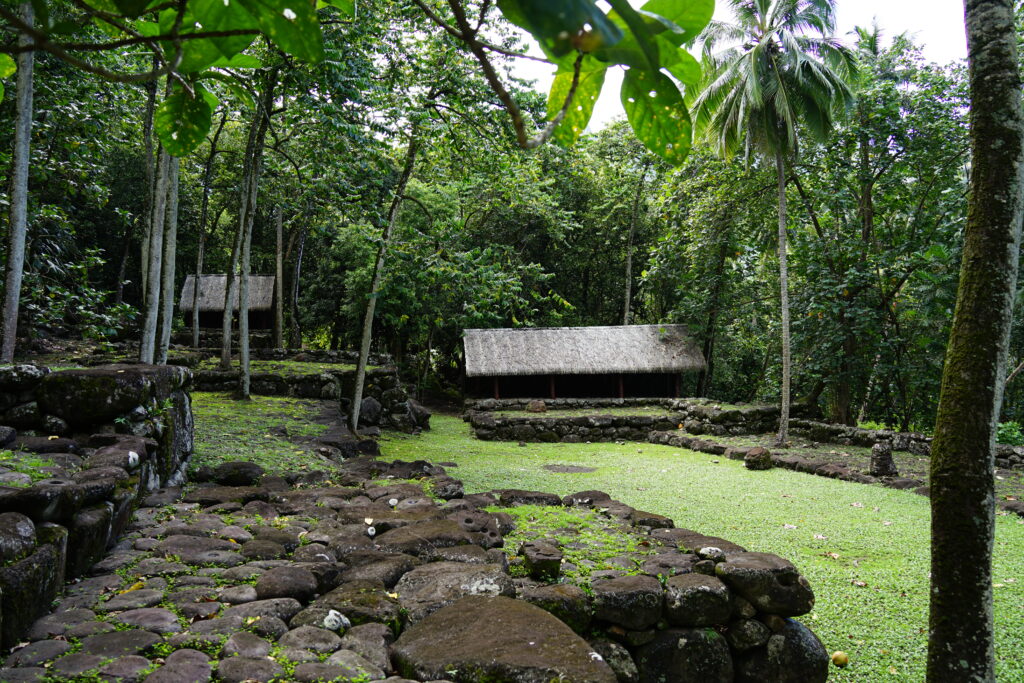
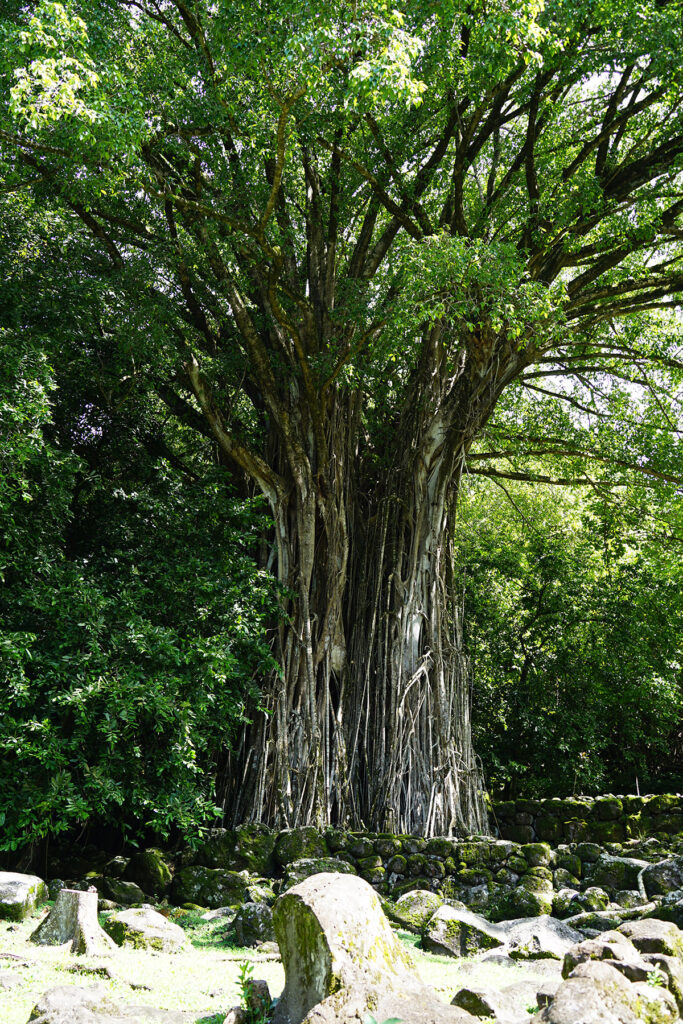
DAY 11:
After sailing south around the dramatic coastline of Nuku Hiva, we arrived in the island’s municipal centre, Taiohae, and went ashore to explore—including a visit to the beautifully crafted Notre Dame Church.
Back on board, we had one final surprise for our guests: a performance by a local dance group, complete with drums, horns, conch shells, and traditional costumes. As the sun set, the men performed the Marquesan haka—a powerful, rhythmic warrior dance with pounding feet, slapping chests, and fierce expressions, all driven by the deep beat of the pahu drum.
Then came the contrast: a solo bird dance, performed by a Marquesan woman with fluid, elegant movements that echoed the grace of the tropicbird.
To finish, we were all invited to join in. Luckily, we’d had some practice back in Hapatoni… though judging by the laughter, we hadn’t improved much!
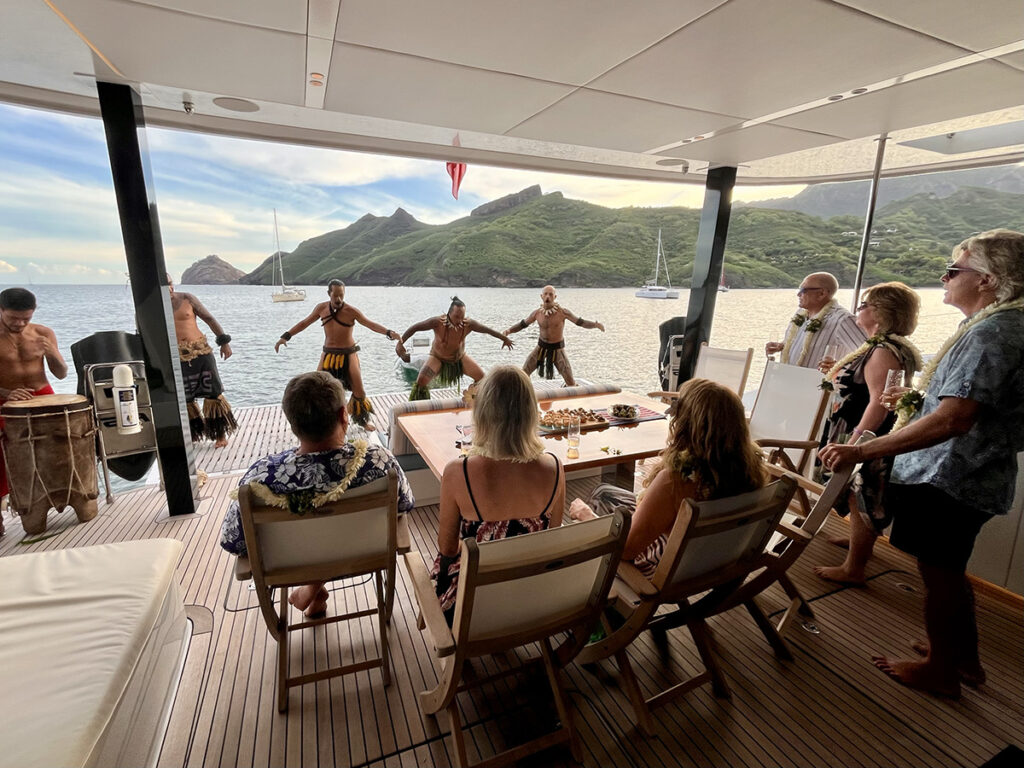
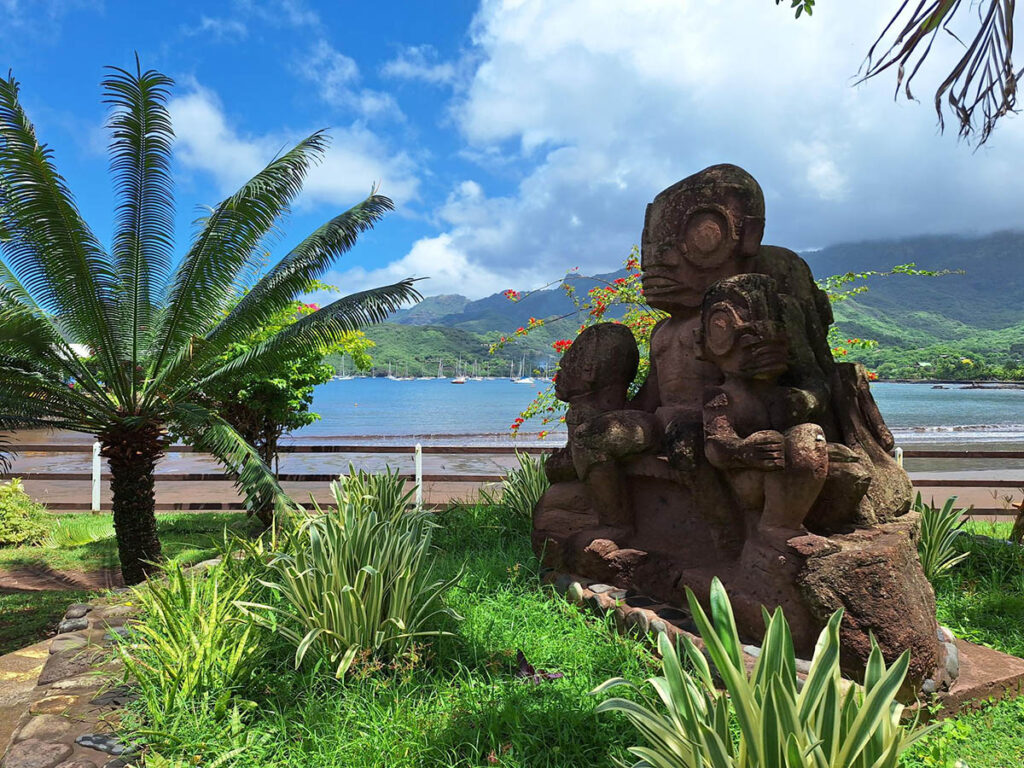
DAY 12:
And so, the final day arrived, another fabulous brunch onboard and it was too soon to say farewell to our guests. The Bundalong crew stayed a few more days in Nuka Hiva before setting sail into the blue once more and heading down to the Tuamotus.

